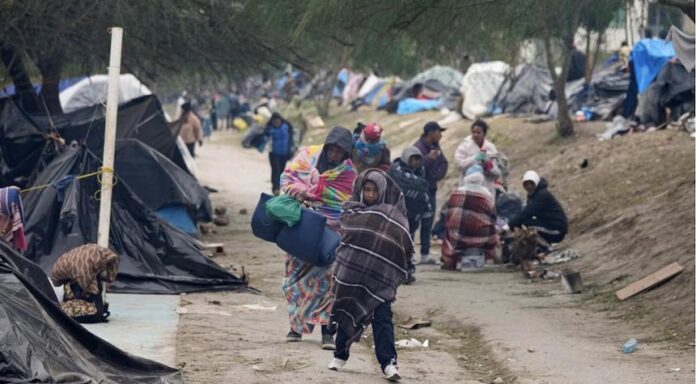Many people who want to enter the U.S. are forced to wait unless they risk crossing the border. This is a dangerous, and at times deadly, undertaking, which often involves crossing the Rio Grande.
Over the past year, hundreds of thousands of people arrived at the border. Many of them were fleeing Central America. After they reach the border they can try different routes to enter the U.S.
What happens to migrants who try to enter the U.S.?
Officials in Yuma say that although southern border crossings are down since Title 42 was ended, they still see more migrants now than two years ago.
They don’t stay in the border towns. Most migrants do not stay in the communities they enter and many struggled to get there.
Daily buses leave the southern border for the Northeast. While many migrants head to New York City, others are left waiting.
Robert is one of many migrants who left Togo in West Africa over a month ago. They are traveling alone. He hopes to find a friend to work with in Indiana.
He said, “I can see peace in this nation.”
Robert stated that traveling through Colombia was the most hazardous. He claimed to have seen several people drowning in a river in Mexico. He said that the Mexican military robbed them at checkpoints.
He told NewsNation that he had left his home because he felt forced to participate in voodoo or religions that he did not believe in.
He said: “I’m happy; I have peace.”
Robert, however, entered the U.S. without permission and is aware that it could be more difficult for him to remain in the country based on U.S. Immigration laws.
Title 8 is a set of laws that govern “Aliens and Nationality”. Migrants can apply to be admitted to the U.S. legally, but they can also be deported.
This rule prohibits migrants from entering the U.S. after crossing the border between the ports of entry. They are deported, processed, and then banned for at least five years. They could be charged and sentenced to jail if they illegally re-enter the U.S.
Due to the overcrowding of detention centers, migrants such as Robert enter the U.S. through multiple points along the southern border.
Yuma is a popular choice, as they are processed by border agents at a border station before being released. They are then sent to the Regional Center for Border Health (a local non-governmental organization). Then, they are taken by bus to the Phoenix International Airport. There they will receive airline tickets from either the NGO or sponsors for flights to other cities in the U.S.
“It is not a problem in Arizona, nor a problem on the border; it is a problem that affects all of us because it has reached our homes,” said Yuma County supervisor Jonathan Lines.
It has been reported that migrants have complained about the inconsistent rules from one sector to another. If a migrant crosses the border in Brownsville, Texas they may be sent back, while a migrant crossing in Yuma could be released and given a notice to show up.
Neither Border Patrol nor NGOs follow up with migrants after they are released in the U.S.


